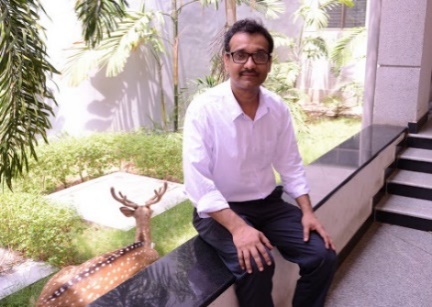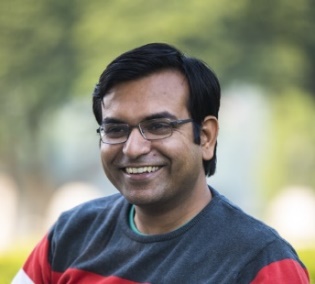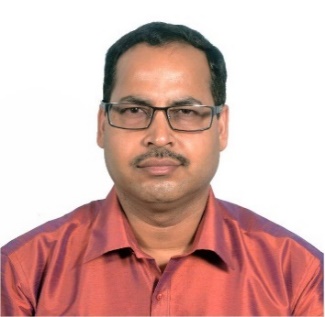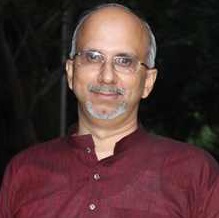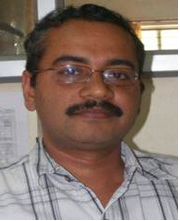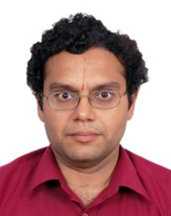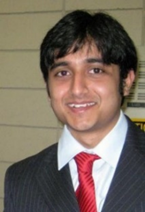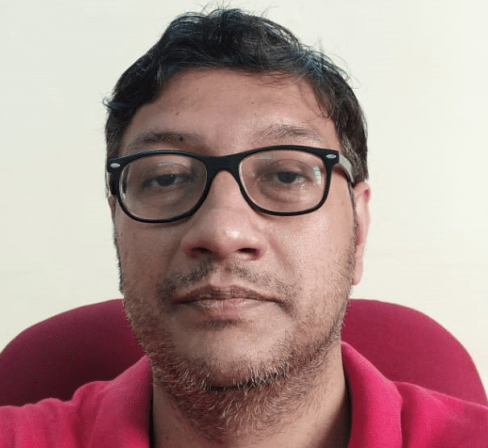Project

Interfacial Microfluidics: Interfacial microfluidics refers to the transport phenomena at a micro-scale involving fluid-fluid and fluid-solid interfaces. The study of interfacial microfluidics could enrich the fundamental understanding of such phenomena occurring at the interfaces and lead to the development of improved techniques for handling and manipulation of fluid streams, drops, particles, and cells as well as energy transport. A better understanding of the behavior of fluid streams and interfaces, drops, particles, and cells and energy transport at micro-scale will lead to applications in Lab on Chip, micro total analysis systems, liquid handling, and micro-thermal systems.

Nano Fluidics: Research directed towards understanding the structural and dynamical properties of organic and polar fluids confined to nanoscale channels has provided a major impetus to the field of fluid mechanics. Pioneering research in nanofluidics reported with great excitement that the various features of a nanochannel, such as its pore size, length, roughness, and morphology greatly influence the transport characteristics of the fluid. The nanoconfinement effects and the interfacial dynamics can be exploited in the development of novel devices beneficial in blue energy harvesting, water desalination, electronic cooling, hydrogen storage, drug delivery, etc.

Lab On chip Technology: Advances in the field of micro nanotechnology have led to the development of miniaturized devices called Lab on Chip (LOC). LOC technology facilitates the integration of several laboratory functions on a single integrated device (chip) of only millimeters to a few square centimeters to achieve biochemical assays. LOC technology has tremendous potential in healthcare and environmental sensing. Although several successful devices have been commercialized (e.g. Abbott, Perkin Elmer, Claros Diagnostics, Agilent, etc.), the field is still at a nascent stage and involves significant challenges that need to be addressed for taping its full potential. Unique phenomena that are predominant at small length scales attributed to the favorable scaling of the relevant forces offer the prime advantages of LOC technology. The use of LOC in healthcare fosters affordability due to the low cost of reagents and chemicals involved owing to the small sample volume requirement. Ease of use and reliability due to the automation via integration with control systems/electronics makes this technology widely accessible. As part of the CoE, one of our goals is to develop novel techniques for the rapid measurement of blood based biomarkers and cell-based assays. We also plan to develop a molecular analysis platform towards rapid and accurate diagnosis of cellular components and rapid monitoring of chemicals.

Expected deliverables of the research
- High-impact Research Publications.
- Patents and Technology developments.
- Industry collaboration.
- Manpower development.
- Internationalization.
- Societal impact.
- Improved perception.
Current status
- Research in the areas of microfluidics, nanofluidics and lab on chip technology are in progress.
- Procurement of new equipments are in progress.
- Recruitment of project staff are under progress.
- Group website development is underway.
- Planning for e-workshops and expert talk programs are in the pipeline.
Collaborations
International Collaborations
- Prof. Rohit Karnik - Mechanical Engineering - MIT, USA -Link
- Prof. Sandip Ghosal - Mechanical Engineering - Northwestern univ., USA -Link
- Prof. Jay Gore - Mechanical Engineering - Purdue univ., USA -Link
- Prof. Aleksandra Radenovic - Bioengineering department - EPFL, Switzerland -Link
- Prof. Aaron Timperman - Chemistry department - UIUC, USA -Link
- Prof. Noreddine Ghaffour - Environment Sci. and Engg - KAUST, Saudi Arabia –Link
- Prof. Shaurya Prakash - Mechanical Engineering - Ohio state univ., USA -Link
- Peter Hack - Blue Energy - RedStack, Netherlands -Link
- Prof. Hyeon Suk Shin - Energy Engineering - UNIST, South Korea -Link
- Prof. Manish K. Tiwari - Mechanical Engineering - University College London -Link
- Prof. Constantine Megaridis - Mech. & Industrial Engg. - University of Illinois at Chicago -Link
- Prof Thomas Pfeifer - Director - Max Planck Institute, Heidelberg -Link
- Prof. Thomas Laurell - Biomedical Engineering - Lund University, Sweden -Link
- Prof. Leslie Yeo - Director, Micro/Nanomedical Research Center - RMIT University, Australia -Link
- Prof. Amy Shen - Micro Bio Nanofluidics Unit - OIST, Japan -Link
- Prof. Sushanta K Mitra - Executive Director, Waterloo Institute for Nanotechnology - University of Waterloo, Canada -Link
Industrial collaborations
- L&T Technology Services, Bangalore, India.
- Jiva Sciences, Bangalore, India.
- Vidcare Innovations, Pune, India.
- Ants Lab.
- Reflex Energy.
- Sun Edison.
International education programs
- E-workshop on “Micro Nano Bio Fluidics”, planned to be held during Dec 2021.
Societal impact
Our team dedicates a significant part of our research to solve problems that impact local society and the national needs. This includes addressing challenges in healthcare, water harvesting, low-cost adulteration identification, energy generation through new technologies. We are in an advanced stage of developing a complete microfluidic platform for early diagnosis of sepsis along with industry partners - L&T Technology Services and Apollo Hospitals. This is a life-saving technology that will significantly reduce the staggering hospitalization costs. Paper-based devices and sensors based on microfluidics is being developed for point of care diagnostics, on-site water monitoring, and food safety. These will help directly improve the health of the population and reduce the expenses on health care giving rise to a more robust economy.
Sustenance statement
We will continue to seek grants and secure external funding mainly to top up the consumables and manpower budget. The thrust of the project will be in both fundamental understanding of the science and in developing applications. For this, we will be working closely with governmental agencies, certification and accreditation organizations, and industries. Towards this, we will not only apply for funding as individual researchers but more as a Team to explore bigger funding opportunities that will support the center in the long run (from DST/DBT, NRF, etc.). We will also explore funding from the industry/research labs who would like to use our facilities, expertise (consulting) and engage with us on long term R&D projects.
References
- hydrogen-per-oxygen
- iit-madras-device-can-diagnose-sepsis-early
- iit-m-deveops-paper-based-sensor-to-detect-antimicrobial-pollutants
Technical/ Scientific Progress
New work done in the project
Interfacial microfluidics:
As part of the IoE initiative, we have taken up several new research problems related to the topic of interfacial microfluidics. Our Research aimed at studying the behavior of particles, droplets, and fluid interfaces in confined flows has led to new understanding and advanced the fields. The specific technical/scientific achievements are summarized below.
We have taken up a new research initiative to investigate the behavior of fluid interfaces and particles in confined flows and exposed to sound waves.
The transition from the stream to the droplet regime and vice versa is typically achieved by adjusting the flow rate, consequently modifying the capillary numbers (Ca) of the phases. However, the transition between the regimes achieved by altering the Ca inherits a longer time delay due to the response time of the fluidic system. One means of generating drops while operating at a higher and fixed Ca, and achieving fast reversible transition between stream and droplet regimes would be to trigger the system with an external perturbation. Acoustic radiation force due to standing bulk acoustic waves can relocate coflowing immiscible streams and introduce perturbation. We have demonstrated and explained a reversible transition between the two regimes by controlling exposure of the system to acoustic standing waves, with Ca fixed. The results of this study have been published in the journal Physical Review Letters.
Inhomogeneous co-flowing streams inside a microchannel exposed to an acoustic standing wave can lead to the relocation of the streams. We have investigated the use of combined acoustic relocation and acoustophoretic migration for the transfer of particles between co-flowing fluids inside a microchannel exposed to a standing pressure half-wave with a pressure nodal plane along the channel centerline and anti-nodal planes along the walls. We show that under the influence of the applied field, particles suspended in a carrier fluid of low acoustic impedance flowing along the channel center are initially dragged toward the walls along with the relocating fluid and later migrate into the target fluid that relocates from the walls to the center. We also demonstrate the medium exchange and size-based sorting of biological cells, demonstrating the potential application in biochemical assays. The results of this study have been published in the journal Physical Review Fluids.
New research initiatives have been taken up in understanding the behavior of droplets in confined flows and open surfaces.
Despite a growing interest in the focusing and manipulation of particles in non-Newtonian fluids in confined flows, the combined effect of viscoelastic and shear-thinning effects on particle dynamics is not well understood. We see that much of the literature to date focuses on weakly confined microparticles at low concentrations of synthetic polymers, polymer concentration is limited to the dilute regime, thereby limiting the shear-thinning effect. Little is known about the focusing patterns of these microparticles in polymeric fluids at different molecular weights (MW), concentrations (c), and flow rates, as most of the previous works have dealt with fixed concentration and flow rate. Moreover, the use of a higher polymer concentration would bring out the effect of the strongly shear-thinning nature of the fluid on the particle dynamics. We investigated the dynamics of rigid microparticles in confined flows of strongly shear-thinning viscoelastic (STVE) fluids at very low Reynolds numbers. The results of this study have been published in the journal Physics of Fluids. Handling and manipulation of particle-encapsulating droplets (PED) have profound applications in biochemical assays. Despite recent developments in droplet handling using magnetofluidics, two questions remain unexplored. First, although it is found that PED is larger, the effect of the droplet generation regime - squeezing, dripping, and jetting, on the size contrast between PED and empty droplets (ED) has not been investigated. Second, since encapsulated particles are generally diamagnetic, the magnetic force acting on a PED will be a function of the total volume of the ferrofluids present in the droplet and not the entire volume of the droplet. A pair of PED and ED of identical size can have a different volume of ferrofluids and different values of magnetic forces acting on them, and hence can be sorted. Conversely, a pair of PED and ED of different sizes can have the same volume of MNPs and hence the same value of magnetic force acting on them, and hence sorting will not be possible. We studied encapsulation of microparticles (beads and cells) in aqueous ferrofluid droplets as the discrete phase in mineral oil as the primary continuous phase and sorting of PED from empty droplets (ED) at the interface of the continuous phase (CP) in coflow with a second continuous phase using a magnetic field. The results of this study have been published in the journal Soft Matter.
Despite recent developments in the study of droplet impact on surfaces, in terms of fundamental understanding and development of analytical models, it is evident that the focus has been on studying droplet impact behavior on homogenous surfaces of uniform wettability, and studies on droplet impact over composite surfaces are not attempted yet. The spatial variation in the wettability of a surface can have a significant effect on the spreading and retraction behavior of an impacting droplet and hence the overall impact dynamics. Although composite surfaces have proven applications, there was a lack of understanding of droplet impact on surfaces with a sudden jump in wettability. We studied the behavior of a liquid drop impacting a composite surface having a superhydrophilic (SHL) spot surrounded by a superhydrophobic (SHB) region. The results of this study have been published in the journal Langmuir.
Using continuous wettability gradients, we have demonstrated a standalone power-free technique for transporting and splitting a droplet on an open surface. The finite element method is used to solve a three-dimensional phase-field Cahn-Hilliard model for interfaces and Navier-Stokes equations for transport. A Y-shaped wettability gradient track - laid on a superhydrophobic background - is used to investigate the dynamics of the splitting process. We can manipulate the widths of the Y-branches to control the droplet splitting ratio. The physics of droplet transport, the flow pattern inside the droplet, and the splitting mechanisms have all been explained using detailed numerical studies and scaling analysis. The results of this study have been published in the journal Physical Review Fluids.
A better understanding of droplet manipulation on an open surface is very much essential for open surface microfluidics applications. Generally, a droplet/liquid can be manipulated on an open surface with the help of external energy, whereas it is also possible to manipulate a droplet passively. We have demonstrated passive droplet manipulation 1) By creating a gradient of wettability on the surface either by creating texture gradient (physical) or by creating energy gradient (chemical) on the surface and, 2) By creating shape gradient surface. The droplet moves on such surfaces due to the Laplace pressure difference across the droplet. The results of this study have been published in the journal Physics of Fluids.
A new research initiative is taken up under the IoE scheme for understanding the behavior of microswimmers – C. Elegans and Bovine sperms cells.
Nanofluidics:
Under the IoE initiative, we have taken up several new research problems related to the topic of nanofluidics. The specific technical/scientific achievements are summarized below.
A new line of research on the disparate effect of strain on thermal conductivity of 2-D materials has been initiated under the initiative. Thermal transport in 2-D (dimensional) structures is highly susceptible to external perturbations such as strain, owing to their high surface-to-volume ratio. In this study, we investigate the influence of strain on the thermal conductivity of flat (graphene and hexagonal boron nitride), buckled and puckered (molybdenum disulfide and black phosphorous) 2-D materials. Unlike bulk materials where the thermal conductivity reduces with strain, the thermal conductivity of 2-D materials under strain is observed to be unique and dependent on the material considered. To understand such diverse strain-dependent thermal conductivity in 2-D materials, the phonon mode properties are calculated. It was observed that the strain softens the longitudinal mode (LA), whereas the out-of-plane acoustic mode (ZA) undergoes stiffening albeit with various extents. In flat 2-D materials, the dispersion of ZA mode is linearized under strain while it tends to linearize in buckled and puckered structures. The variation in the phonon group velocity of ZA mode coupled with the anomalous behavior of the phonon lifetime of acoustic modes results in diverse strain dependence of the thermal conductivity of 2-D materials. Our findings will offer insight into the influence of strain of 2-D materials and will help tailor the thermal properties of these materials for various applications such as nanoelectronics and thermoelectric devices. Some of these results have been already published in the recent issue of the journal Phys. Chem. Chem. Phys.
Solid-liquid interfaces at Nanoscale: A new line of investigation has been started on the effects of electrostatic interactions on Kaptiza resistance in boron nitride-water interfaces. Here we study the influence of charged systems (ions in solution and partial charges on nanotubes) as well as the application of external electric fields (which was never considered before) and their effect on the heat transfer at the interface, including under extreme conditions that lead to electrofreezing. The preliminary results have been communicated to Langmuir in a manuscript that is being revised for publication.
Research directed towards understanding the structural and dynamical properties of organic and polar fluids confined to nanoscale channels has provided a major impetus to the field of fluid mechanics. In this regard, the technical and scientific achievements in the project achieved by my project are analytical, theoretical, and mathematical formulation framework for the first time to match the experimental conductance, measured current (nA), and measured power density for nanochannel, nanopores, in a single digit nanometer-scale membranes and > 10 nm scale membranes, microscale membranes of different membrane materials.
Osmotic energy from salinity gradient (i.e. Blue energy) is identified as a promising non-intermittent renewable energy source for sustainable technology. In this regard, scalable fabrication of μm to mm size pores on graphene membrane has been carried out for blue energy generation. The µm and mm size pores have advantages over nanopores in terms of current density and avoid the technical challenges of fabricating multiple nanopores. A remarkable osmotic power in the order of μW has been achieved using mm size pores, which is three to six orders of magnitudes higher compared to nanoporous membranes.
Lab on chip technology:
As the Google form did not allow us to include the list of papers due to size limitations, please download the details at the following link
Infrastructure developments
S. No Name of the Equipment Status 1 High-speed High-resolution Camera GTE Waiting for Ministry’s approval 2 Modular microdrilling workstation (2D)+motion control software-H/L PO Released 3 Zoom Lens Recived 4 Coulter counter PO released. Delivery expected by January 2022 5 Surface Profilometer Delivery Expected by January 2022 6 IR Camera PO released. 7 High-performance Workstations Computers - H GTE Waiting for Ministry’s approval 8 Multi-zone Thermal Chemical Vapor deposition (CVD) system-H Retendered Documents under Verification 9 High current power supply PO Released. Delay in delivery from Vendor’s side 10 Laser Mask Plotter PO Released. 11 Chemical wet bench + Sonicator + Hot plate with Magnetic stirrer PO Released. 12 Spin Coater Received 13 Signal Generator Under Verification ICSR Purchase Section 14 Amplifier GTE Waiting for Ministry’s Approval
Output
Conference:
- Secretary, 26th National and 4th ISHMT-ASTFE Heat and Mass Transfer (ICHMT), IIT Madras, 2021.
- Session Chair, ICHMT 2021.
- Member of the Organizing committee, Acoustofluidics 2021.
- Member of the Organizing committee, Micro-FIP, 2021.
- Session Chair, Acoustofluidics 2021 and MicroFIP 2021.
- S. Patari, P. S. Mahapatra. “A point of care sensor for milk adulteration detection.” In 2021 IEEE Sensors, pp. 1-4. IEEE.
- I. U. Chowdhury, P. S. Mahapatra, A. K. Sen, Open surface droplet transport and controlled splitting using wettability patterning, DROPLETS-2021, 16-18 August 2021, Technische Universitat, Darmstadt, Germany.
- Sobin Alosious, Billy Todd and Sarith P Sathian (2021). Study of interfacial thermal resistance in boron nitride nanotube (BNNT)-water interface. International ISHMTASTFE Heat and Mass Transfer Conference, IIT Madras, Chennai-600036, Tamil Nadu, India (Oral presentation)
- Dheeraj KVS and Sarith P Sathian (2021)”Thermal transport in MoS2 and 2D Black Phosphorous”, 26th National and 4th International ISHMT-ASTFE Heat and Mass Transfer Conference (IHMTC- 2021), IIT Madras, India (Dec 17-20, 2021) (Oral presentation)
- Abhijth Anandakrishnan and Sarith P Sathian (2021) Liquid structuring of confined organic coolant in nanochannels. A comparative study with water. 26th National and 4th International ISHMT-ASTFE Heat and Mass Transfer Conference (IHMTC- 2021), IIT Madras, India (Dec 17-20, 2021) (Oral presentation)
- Study of polarization and layer dependent Raman modes in anisotropic ReS2. P. Upadhyay, N. Maity, P. K. Barman, R. Kumar, A. K. Singh, P. K. Nayak. Oral presentation at the 12th Recent Progress in Graphene and Two-dimensional Materials Research Conference (RPGR 2021), Yonsei University, Seoul, South Korea (October 2021).
- Twist angle dependent higher order excitations in van der Waals Heterostructures, Pramoda K. Nayak, Webinar on Nanotechnology and Nanomedicine, PHRONESIS LLC, USA (March, 2021)
- Tunable exciton-trion state in twisted bilayer WSe2, Pramoda K. Nayak, Prahalad Kanti Barman, Pranshoo Upadhyay Global Virtual Summit on Carbon, Graphene, 0D, 1D, and 2D Materials (July, 2021) (best presentation award)
- Layer Dependent Semiconductor to Metal Transition in PtSe2: From First Principle Calculation Vishal K. Pathak, N. Meenakshisundaram and Pramoda K. Nayak, 65th DAE Solid State Physics Symposium (DAE-SSPS 2021) held at Mumbai during December 15-19, 2021.
- Chirality sensitive Raman modes and in-plane anisotropy in ?-MoO3, Ravindra Kumar, Prahalad K. Barman, M. S. Ramachandra Rao, Pramoda K. Nayak, Third Indian Materials Conclave and the 32nd Annual General Meeting of MRSI, held at IIT Madras, December 20-23, 2021
Webinars:
MNBF Talk Series is a monthly webinar Series where renowned Professors from Academia are invited to host a talk about the latest trends in the areas related to Microfluidics, Nanofluidics and Biofluidics.
1st Talk Speaker - Prof. David A . Weitz, Harvard University Title - Dripping, Jetting, Drops and Wetting: The Magic of Microfluidics Youtube Link - link
2nd Talk Speaker - Prof. Howard A. Stone, Princeton University Title - Microfluidic approaches to new problems: i) Separations, ii) Diffusiophoresis, and iii) Soil carbon Youtube Link - link
3rd Talk Speaker – Prof. Constantine M. Megaridis, University of Illinois at Chicago Title – Surface Wettability Engineering: From Microfluidics to Energy Applications and Beyond Youtube Link - link
4th Talk Speaker - Prof. Dino DI CARLO, University of California, Los Angeles (UCLA) Title - Lab on a particle technology to scale biological research 1000-fold Youtube Link - link
Presentations:
- Delivered a talk at the workshop on “2D Materials: Fundamentals to Applications”, held at SRM Institute of Science and technology on September 20, 2021.
- Delivered a talk at BITS Pilani K. K. Birla Goa Campus, Goa on 23rd September 2021
Papers:
As the Google form did not allow us to include the list of papers due to size limitations, please download the list of papers at the following link
Media coverage:
As the Google form did not allow us to include the list of papers due to size limitations, please download the media coverage details at the following link
Mobility
Visits planned for PI, co-PIs, international collaborators and students (both inbound and outbound)
A visit is planned to Swinburne University of Technology during the summer of 2022. This is to undertake a collaborative work on the use of machine learning on the prediction of molecular scale properties at nanoscale solid liquid interfaces.
Relationship
Industrial Engagement
- Jiva Sciences Pvt. Ltd.
- L&T Technology Services.
- Vidcare Pvt. Ltd.
- MOU signed with M/s. Global Pharma Healthcare Pvt. Ltd, Chennai for collaborative research in the area of ‘drugs and drug delivery systems. The first project in this series entitled ‘Effective Pathways (Eco-Friendly/Cost Effective & Pharmacopoeially Acceptable) Synthesis of Ofloxacin and Related Drugs (Moxifloxacin, Norfloxacin And Ciprofloxacin)’ is currently underway.
University Engagement
- University of Waterloo
- Lund University
- Okinawa Institute of Science & Technology
- RMIT University
- Swinburne University of Technology.


